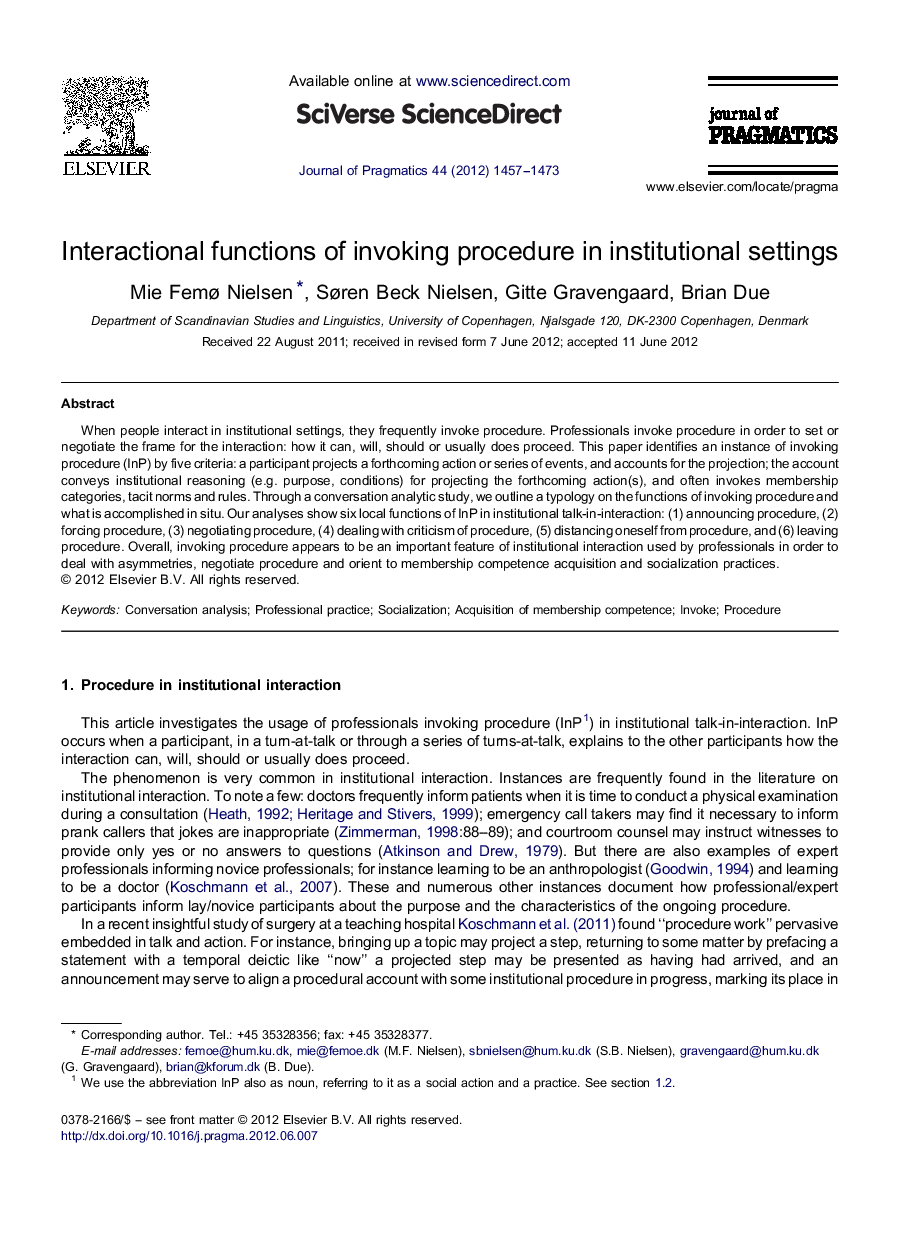| Article ID | Journal | Published Year | Pages | File Type |
|---|---|---|---|---|
| 933130 | Journal of Pragmatics | 2012 | 17 Pages |
When people interact in institutional settings, they frequently invoke procedure. Professionals invoke procedure in order to set or negotiate the frame for the interaction: how it can, will, should or usually does proceed. This paper identifies an instance of invoking procedure (InP) by five criteria: a participant projects a forthcoming action or series of events, and accounts for the projection; the account conveys institutional reasoning (e.g. purpose, conditions) for projecting the forthcoming action(s), and often invokes membership categories, tacit norms and rules. Through a conversation analytic study, we outline a typology on the functions of invoking procedure and what is accomplished in situ. Our analyses show six local functions of InP in institutional talk-in-interaction: (1) announcing procedure, (2) forcing procedure, (3) negotiating procedure, (4) dealing with criticism of procedure, (5) distancing oneself from procedure, and (6) leaving procedure. Overall, invoking procedure appears to be an important feature of institutional interaction used by professionals in order to deal with asymmetries, negotiate procedure and orient to membership competence acquisition and socialization practices.
► We identify five criteria for when professionals invoke procedure. ► We outline a typology of the functions of InP in institutional interaction. ► Invoking procedure (InP) is used to set the frame for the interaction. ► InP help negotiate procedure and deal with asymmetries/membership socialization. ► We suggest to modify the notions ‘professional’, ‘novice’ and ‘lay participants’.
